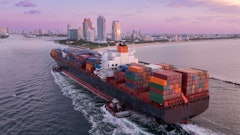
Thanks to the rise of e-commerce and the heightening of customer expectations by Amazon and other leading companies, shipping and delivery have become a key driver of overall customer satisfaction. Customers now expect reliability, speed and convenience in the delivery experience, and a company’s ability to meet those expectations can even be a source of competitive differentiation.
In the past, supply chain management (SCM), shipping and fulfillment were often seen as necessary evils of e-commerce—an afterthought—which is why shipping information often only made its first appearance on the payment page, deep within the shopping cart. Winners in e-commerce are developing and executing a shipping and fulfillment strategy that highlights their capabilities and puts them front and center in the online shopping experience. The result is higher conversions in the shopping cart. Dropping shipping time to three days or less from four-to-five days can increase sales by over 8 percent by cutting abandonment rates.
Executing against the wrong strategy—or not having a strategy at all—is a recipe for higher costs and lower customer satisfaction levels and can have a major negative impact on your business. Research has shown that 37 percent of consumers who have had a bad shipping experience with a merchant will never shop with them again. On the upside, 87 percent of consumers report that a positive delivery experience makes them more likely to shop with a merchant again.
What do you need to do in order to get it right?
- Know your limitations. While you can use Amazon as a blueprint, you cannot expect to beat their delivery experience. As noted in a Wall Street Journal article on the competitive challenge smaller companies face from Amazon: “There is no universe where you can beat Amazon’s shipping prices,” said Stefan Weitz, chief product and strategy officer at Radial, which handles online orders from about two-dozen warehouses and clients’ stores. “I don’t have to beat Amazon. I have to get close enough to provide a service level to my customers.”
- Know where you are. What services are you using? What are they costing you? What are the actual service levels being delivered to your customers (not just carrier SLAs) by service, mode and key markets?
- Know your market and customer base. What is the service level you need to provide to your customers? Make the hard decisions you need to about what you will—and won’t—do for your customers. What is the cost/delivery time tradeoff that will maximize your customers’ satisfaction levels? This may vary by product and by market.
- Know your cost constraints on shipping. What can you afford to spend while still keeping margins in an acceptable range?
- Ask the critical “what if” questions. When you know where you are and what you need to do, move ahead to examining where better is possible, through detailed modeling of what-if alternatives. How much would it cost be to speed delivery in a key market by a day? Are there markets or products where you can exchange a slower delivery time for lower costs? Do you need to open a new distribution center to better serve a fast-growing market? Do you have the right carrier and service mix to reach your cost and service goals?
- Know your sources of power with your carriers. Shipping volume, service mix, market concentration all can afford you preferential treatment from the carriers.
- Invest in yourself and your business. Getting the right shipping and fulfillment capabilities in place can require some initial investment, but it will pay off in higher shopping cart conversion rates and more efficient operations.
- Don’t fall asleep at the wheel. You need to monitor what is happening in your shipping network constantly to know what is happening on the ground, so you can course-correct as needed.
- Keep a maniacal focus on your customers’ experience. The customer experience must extend to the delivery experience. It is no secret that the Net Promoter Score (NPS) key performance indicator has evolved to being a metric for logistics and operations professionals, especially in e-commerce companies.
SCM, shipping and delivery have become a critical part of the overall e-commerce customer experience. The ability to ensure that you are providing your customers with the best possible shipping experience in a cost-effective fashion requires developing, executing, monitoring and adjusting a shipping strategy based on your specific customers and markets and your unique capabilities as a company. Providing that ideal experience will increase customer satisfaction and return business, as well as help differentiate your company from its competitors.














![Pros To Know 2026 [color]](https://img.sdcexec.com/mindful/acbm/workspaces/default/uploads/2025/08/prostoknow-2026-color.mduFvhpgMk.png?ar=16%3A9&auto=format%2Ccompress&bg=fff&fill-color=fff&fit=fill&h=135&q=70&w=240)